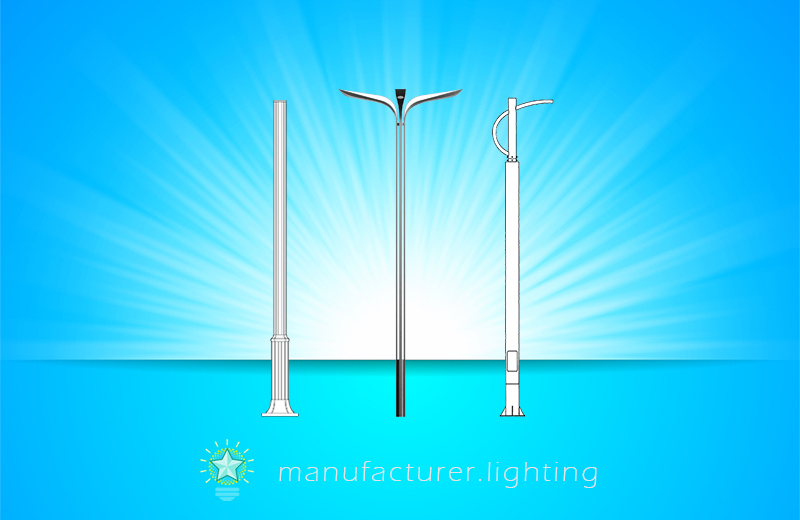
Light poles are structures specifically designed to support single or multiple luminaire configurations. Their primary role is to resist the combinations of luminaire weight, ice and wind forces which poles may suffer from throughout their expected life. Apart from general purpose area lighting, poles are required to support specific task lighting, which can include building and sign illumination. Poles intended for the mounting of street lights, pedestrian lamps, area luminaires frequently take the form of structural columns having reach arms and brackets fitted at different positions to support light. In most cases these metal poles are comprised of elongated tapered hollow tubes having a typically square or rectangular mounting plate properly secured to the lower end thereof for example by welding. These poles are usually well treated by various techniques to retard the corrosive action of the elements when manufactured. Common materials utilized to make poles include steel, aluminum and fiberglass, with steel being the most frequently used because of its strength and affordability. Occasionally concrete, cast iron and wood may also be used. Steel poles and other steel components may be galvanized to safeguard them from corrosion. Aside from galvanizing, poles may be painted or powder coated. The most typical pole shapes are round or square in cross-section, fluted and other ornamental cross-sections can also be found. The option to choose the correct pole design varies according to the specific loading requirements of each application such as mounting height, luminaire type, auxiliary equipment and special loading, wind speed, finish, special requirements and mounting configurations.
